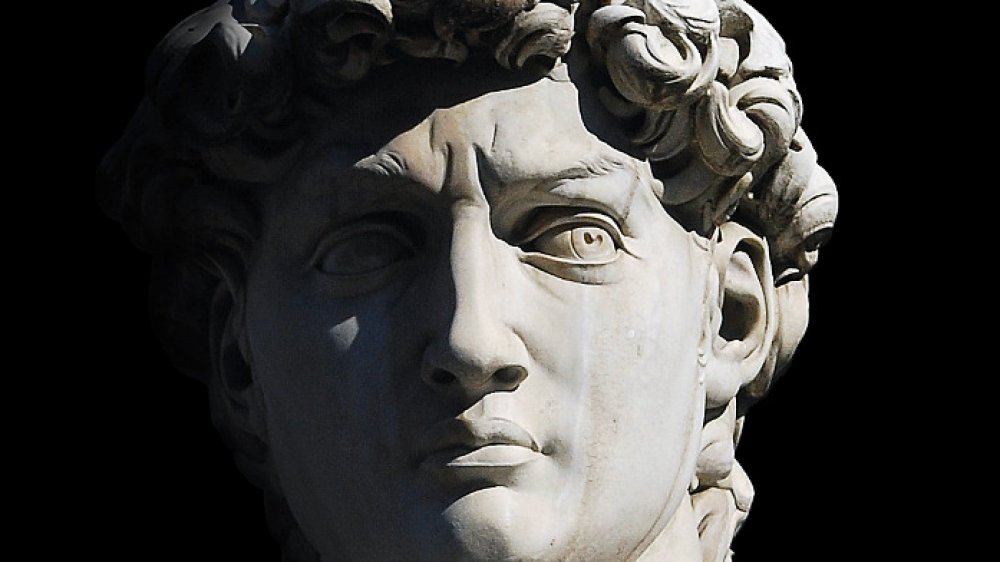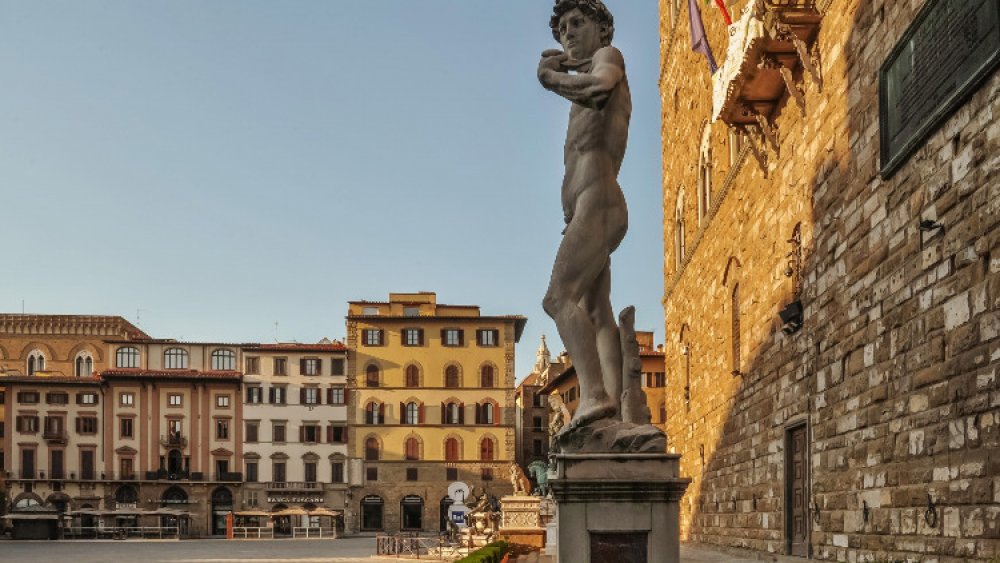The Real Reason People Hated Michelangelo's David
There's something about museums that seem to sterilize the art pieces they exhibit. Maybe it's the acoustics. While we can nod sagely about the screamed political messages in Guernica and The Third of May 1808, we discuss them almost purely in terms of aesthetics, where liking and disliking a piece of art is a simple matter of taste. After all, while they're in the museum, they seem as clean and apolitical as the marble of Michelangelo's David. Yet even this seemingly innocuous statue made a statement in its day, per historian Sylvia Prince.
In the fifteenth century, one family effectively ruled the republic of Florence: the Medicis. But by the beginning of the 16th century, their influence had largely dissipated and they were exiled from Florence for a decade, as the city emerged from a period of chaos. It's safe to say, feelings about the Medicis were strong. In the middle of this mess, David was made and was immediately politicized as a symbol that both united Florence and pitted the city against its ruling family.
David and Goliath
Michelangelo was commissioned to carve a statue of David in 1501 for Florence's cathedral, according to My Modern Met. By 1504, however, he ran into a snag. The statue, which he had carved from a single block of marble, weighed over six tons –- not a feasible weight for anyone to lift to the top of a cathedral. After much deliberation, its was placed outside the town hall of Palazzo della Signoria — a symbol of the people — facing Rome, where the "Medicean Goliath" resided in exile. Michelangelo may not have intended the statue to become such a strong statement, as he had previously enjoyed the family's patronage, but the placement made it undeniably political.
If the placement of a tyrant-slaying hero next to a town hall that had recently exiled an all-powerful family added a symbolic component to the piece, so too did its composition. See, most depictions of David catch him in the triumphal moment after he's lobbed through Goliath's skull. Michelangelo's David differs from this, however, as it shows him readying for the fight, readying to take on an aggressive Goliath. Naturally, then, citizens picked up on the symbolism, and as soon as David was unveiled, protestors pelted him with stones in an anti-Medici display.
When the Medicis eventually returned to Florence eight years later, they tried to co-opt David, declaring that it stood for all of Florence, themselves included, but Florentines didn't forget, and the statue would remain a potent symbol amid future anti-Medici riots.
That was then though. Now, David has become so divorced from its history that when Squidward unknowingly creates an exact replica in SpongeBob SquarePants, it serves simply as the greatness of art.

